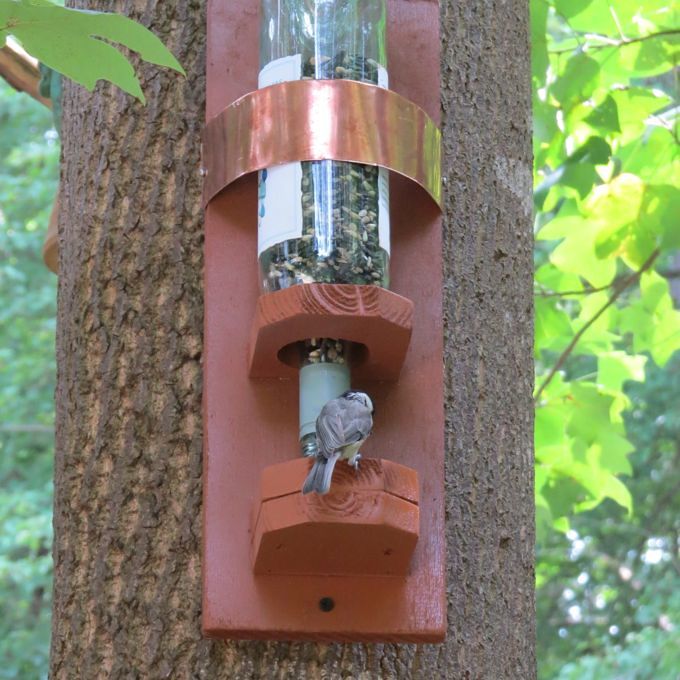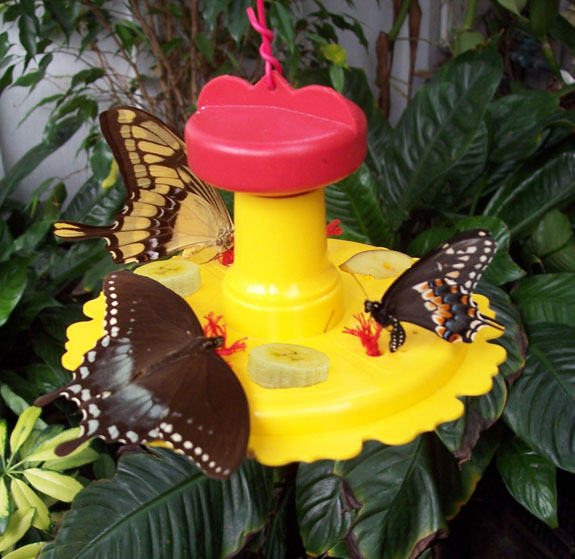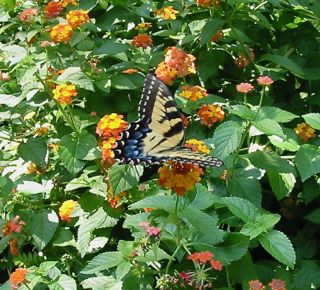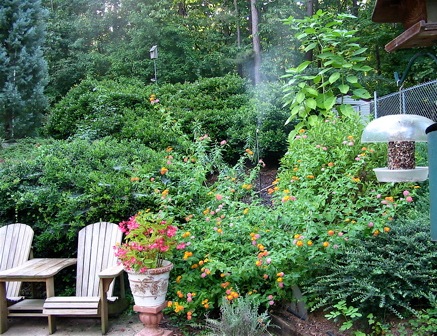-
An Old Favorite Wild Bird Feeder is Back
It takes all kinds… all kind of feeders that is. For suet, peanuts, mealworms, nectar, fruit, jelly, nyjer, where does one start? Let’ go with basic seed in a not so basic feeder! Headed to a house-warming or birthday party? Something like this wild bird feeder is perfect when you’d like to bring a little more than a bottle of vino. Long after consumption, this gift keeps on giving! Even if the recipient isn’t into the birding scene… it’s a fantastic way to to introduce them to one of the fastest growing and most enjoyable hobbies around!
Handcrafted in GA, the bottle feeder quickly mounts just about anywhere, and birds flock to it immediately! The stash stays dry and protected from elements, while drainage in the tray keeps things from getting messy. Black oil sunflower or mixed seed works best, we prefer sunflower hearts or a no-waste mix as it leaves little ground mess. Many feathered species prefer sunflower hearts too; chickadees, titmice, nuthatches, cardinals, bluebirds will eat this seed in winter, finches and woodpeckers… to name just a few of the usual suspects!
For a limited time, the bottle feeder is back because the artist says they just take too long to make! Wildly popular on Pinterest a few years ago, the bird feeder looks like something you could easily make yourself, maybe so if you’re the handy type? The one thing we do know is birds love this feeder and it’s perfect for year-round use.
-
Butterfly Feeders for Unique Garden Accents and Monarchs
Buzz about the Monarch’s dwindling population is more than justified. You may have heard about it, but if not check this fact: Since the mid-90’s their decline has reached 90% from the 20-year average. What’s this mean in terms of real numbers? Swap monarchs for people for a second, every person in the US would be gone except for those living in just two states!
One of the biggest reasons for their decline is believed to be the disappearance of milkweed- the Monarch caterpillar’s only food source, and also the only plant on which Monarchs will lay their eggs. To name a few other culprits; urban sprawl, extreme weather, new farming practices and illegal logging in the butterflies’ winter habitat in Mexico.
Offering suitable habitat and butterfly feeders really does help the local Monarch population. Don’t bother with houses… they don’t use them! Both can be fantastic and unique garden accents – with feeders being much more useful. Butterflies also adore leaf misters, set one up near lantana or any other nectar-producing plant and you’re bound to see some winged action!
The butterfly feeders above are handmade, blown glass flowers on a 36-inch stake. They’re versatile for nectar or fruit, and for songbirds too. The hanging butterfly feeder below has been tested and approved by butterfly experts. A special combination of wicks and tubes mimic real flower blossoms, the design and color attracts butterflies and the nectar reservoir size is ideal to minimize spoilage.
This season, Swallowtails have been spotted in our butterfly habitat, but no Monarchs yet 🙁 Still a few months for their presence in the southeast… we’ll continue to feed and keep watch for the winged wonders!
-
Opportunistic Robins and More Wait Below this Mealworm Feeder
The worms crawl in-the worms crawl out… of some mealworm feeders!
See them in the back, on the right side? Escapees! It’s problematic enough when cat birds and cardinals and warblers start in on your live worms, after all-they’re meant for the bluebirds. Recent fledges are learning to use the feeders, so it’s a real bummer when they figure it out and it’s empty 🙁
Robins, chipping sparrows, cardinals, towhees, chickadees, titmice and still others have learned that sometimes it rains worms. They’ll sit below this screened mealworm feeder and wait for the manna to fall… and it does.
Not to say the design is sub-par, just maybe not the best choice for offering live mealies. Dried worms and other bluebird treats are ideal in this hanging feeder, but the tooth (screen texture) gives the live ones a good grip and path to exit stage left!
The new steel Orb Feeder features an acrylic cup, a nice smooth surface that keeps worms put, that is until titmice and chickadees discover them. And the blue dish shown above is also a nice smooth surface, one from where worms can not escape.
Something we’ve experimented with this season (and is quite successful) is offering more of the dried worms – much more economical. But the trick is to soften them first so that parents will feed them babies. Steeping dried meal worms in boiling water for about ten minutes-then draining, is ideal if you’re a backyard bird freak like us 🙂
So a good basic rule of thumb is that live worms do much better when placed on a smooth surface! Should too many worms be disappearing altogether, an enclosed feeder is likely best. Bluebirds are one of the few who will “fly-in” a feeder. Without fail, Carolina wrens are always the first to figure it out!
With so many new fledges out and about, it’s a great time to try offering mealworms if you never have in the past. One way to stretch worms and make them lat longer is to use a mixture. One of our recipes includes a no-melt suet cake (crumbled), shelled peanuts and a few sunflower hearts… the birds love it!







